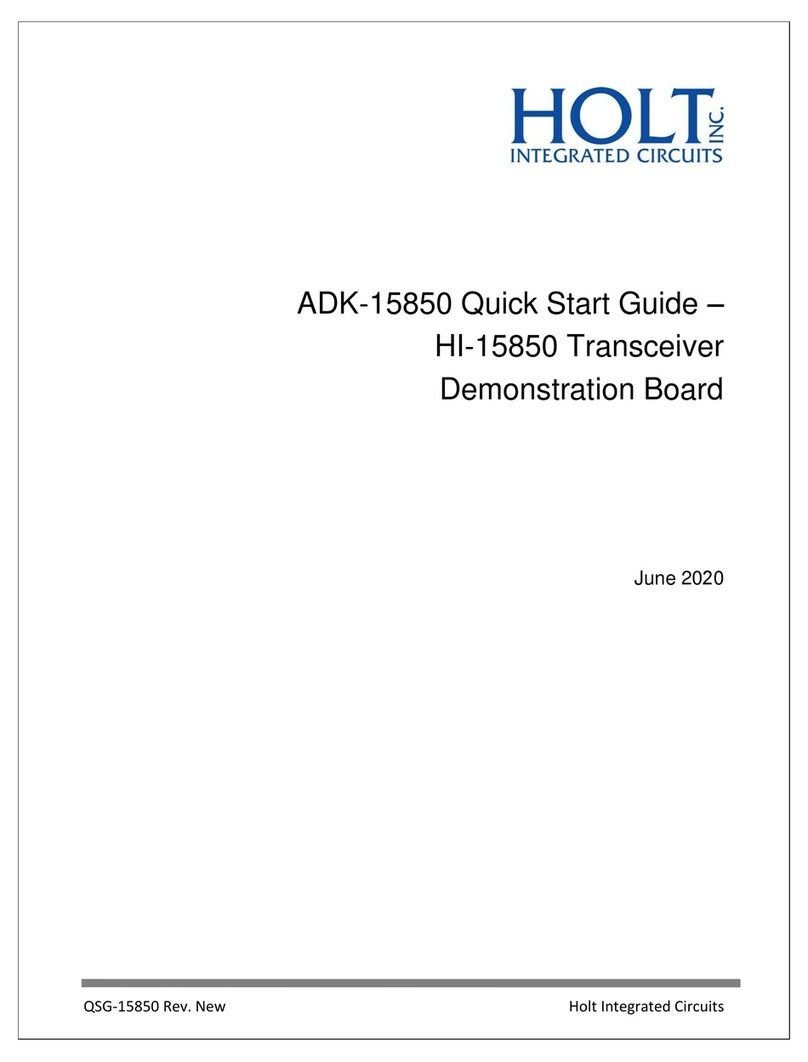
QSG-15691
QSG-15691 Rev. New Holt Integrated Circuits
7
The HI-15691 Signal Break-Out Board (and user-provided protocol logic) takes the place of the BC or one
of the RTs in the above diagram.
As seen above, each terminal’s stub cable connects to the 1553 bus through a “bus coupler,” which is
typically an off-the-shelf hardware component comprised of coupling transformer(s) for one or more
terminal stubs (each with its own pair of internal current-limiting resistors). Two bus couplers are shown
above. The bus couplers have a bus connection jack at each end for serial connection into the 1553 bus
structure. Each end of the bus has a 78Ω terminator. Holt application note AN-550 provides additional
information about the direct- and transformer-coupled configurations.
Single Scope Probe “Faux Differential” Viewing Option
When characterizing a 1553 terminal, most bus measurements are the differential line-to-line stub
voltage measured across the bus side of the terminal’s isolation transformer. For the HI-15691 signal
break-out board, the transformer is the PM-DB27428 rectangular black cube, and the red and black
differential test point pairs are labeled BUSA/nBUSA and BUSB/nBUSB for the two buses.
Differential line-to-line voltage measurement for Bus A can be accomplished by connecting oscilloscope
probes for channel 1 and channel 2 to the BUSA and nBUSA test points respectively, and using scope
built-in math function to observe “channel 1 minus channel 2”. The user can forgo the channel 2
oscilloscope connection to nBUSA; the single channel 1 probe connection to BUSA provides true
differential viewing of Bus A stub voltage with nBUSA grounded. This is strictly a convenience measure




























